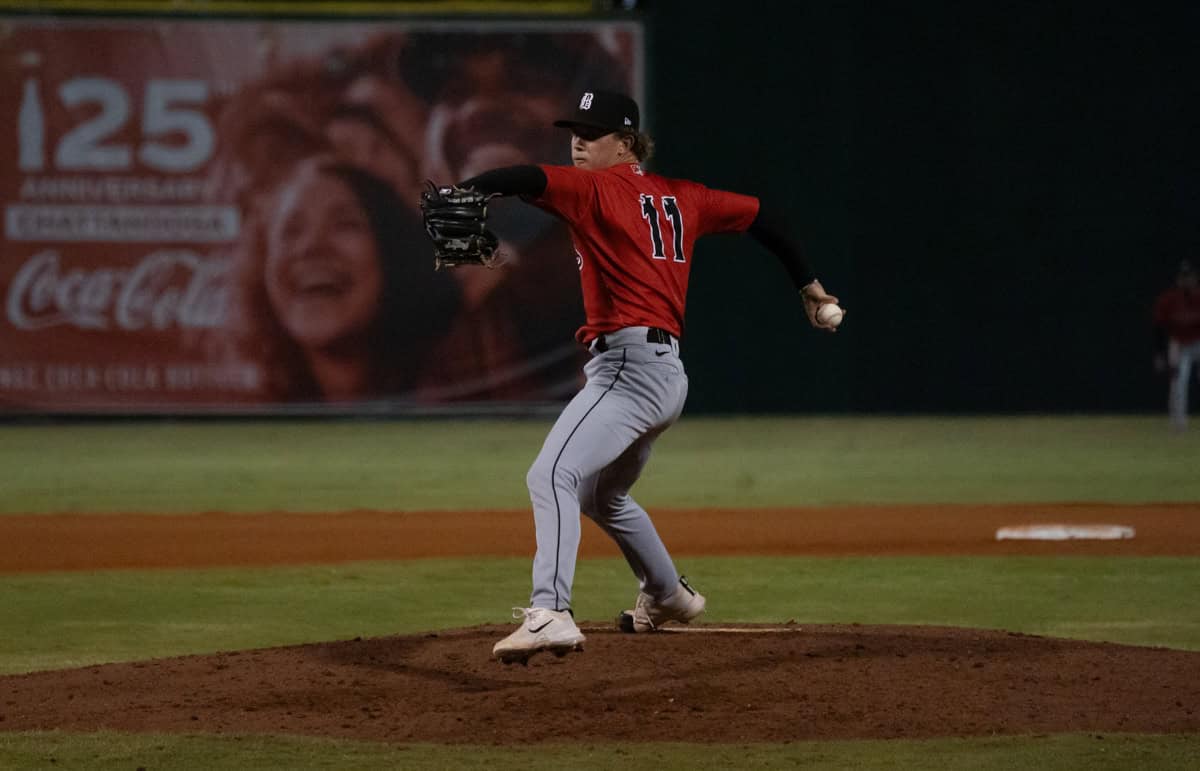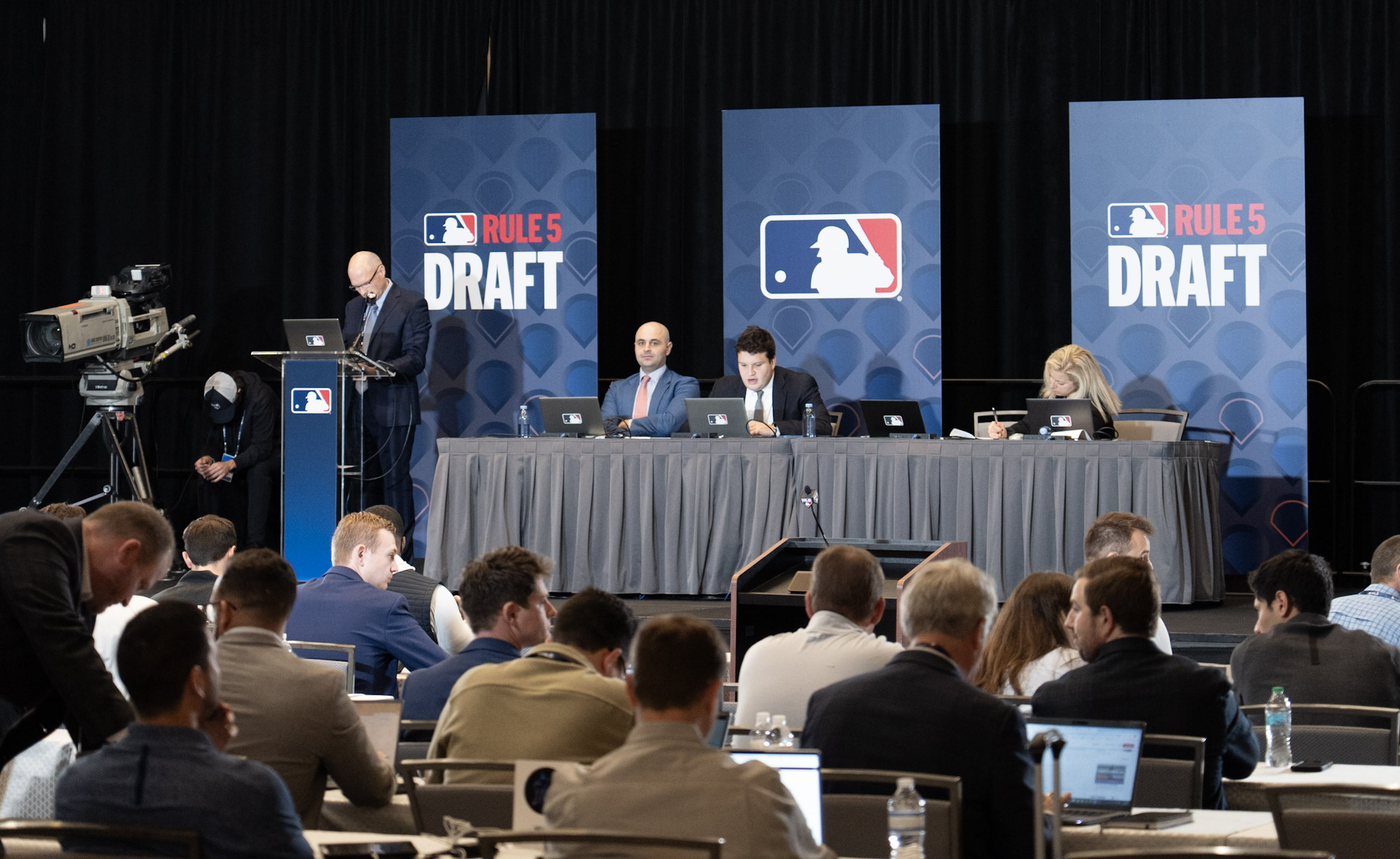White Sox prospect Peyton Pallette is going to the Arizona Fall League and is pretty hyped about it, so if Tuesday night's dominant two-inning relief appearance represented any sort of finale for him with the Birmingham Barons facing playoff elimination, it's that he could be leaving the Double-A level behind for good.
Counting the playoffs, Pallette allowed three earned runs in 17 innings at Birmingham (1.59 ERA) while striking out 19 of the 66 batters he faced (28 percent), and yielding a .186 slugging percentage. Working almost always in two-inning bursts means that since being moved from the High-A Winston-Salem rotation to the bullpen in July, he's compiled 40⅔ innings of relief work with a 1.11 ERA, struck out 35.1 percent of the hitters he's faced and allowed three extra-base hits over that time.
It's a meaningful enough sample for the White Sox front office, as much they refuse to publicly close the door on the former second-round pick returning to starting, to consider Pallette as someone who could be pitching in the majors next year in relief. For the most part, Pallette is having too much fun dominating to dedicate too much attention to mourning his days as a starter.
"It's really just literally going up on the mound and attacking guys," Pallette said of his mindset in relief. "If you're out there and attacking everybody and giving everybody your best stuff and sticking to your strengths, most the time the odds will be in your favor and you'll have a pretty good day out there."
With his ERA sitting at 7.21 at the end of June in Winston-Salem, Pallette sort of expected a move to the pen was coming. And since pitching at a powerhouse SEC program at Arkansas meant he had cut his teeth in the bullpen as an underclassmen, the move didn't faze him either.
If the old adage is that every reliever is just a failed starter, Pallette's path won't reset the narrative. Scouts had been skeptical of his slight 6-foot-1-inch frame in a rotation, even if the added burden of trying to recover his mechanics after losing the 2022 season to Tommy John surgery raised the difficulty level for him. But as the 23-year-old lays out why things have clicked for him out of the pen, his experience speaks to the notion that some pitchers are just more suited to the reliever lifestyle.
"There's definitely been a velocity increase a couple ticks, and honestly I think it's just because my body is not taking such a hit for one period a week," Pallette said. "I love how much I've been pitching every week, even though it adds up to as much as starting once a week. But I'm in there more and I have more of a routine of how to go about each hitter and kind of just get into a rhythm, and I'm sticking with it and going out there and competing."
"He's confident, and sometimes the mental/emotional aspect of a role clicks with a player and he turns into somebody he wasn't before," said Brian Bannister. "I love the arm action, I love the shoulder mobility and how he loads. One thing I always look for is guys who have a 'look like they're going to punch somebody' arm action tend to be the spin guys. He gets into a nice load and you obviously see the 3,000 RPM spin and he can really rip it off. In the current role, with the premium velo, with the spin talent, with the ability to shape the ball, it's just really fun. With a potential leverage guy who has velo, you're trying to figure out what the outlier second pitch is going to be, and I think he's got multiple options."
Unlike other reliever conversions, Pallette isn't of the mind to junk any of his secondary pitches just yet. His slider was a project at the start of the season and he remains optimistic about it. His changeup has taken off because of the higher range of velocity has given it better separation. The biggest usage change he would cite is just throwing his fastball more, since when he first moved to the pen, his attack plan boiled down to "let's just try to blow this fastball by you every single time."
PERTINENT: Barons pitching coach John Ely on Peyton Pallette's new role
Pallette doesn't regard himself who dives too deeply into pitch data, and isn't bothered that a relief routine leaves him less time to overthink his mechanics either. He speaks of his changeup pretty exclusively in terms of how much it looks like his fastball, he evaluates success of his curveball not by the 3,000 RPM readings but landing it for a strike. He likes to read the swings of hitters and respond accordingly with what he throws next, and tearing through a lineup one time at maximum effort suits his methodology.
Correlation doesn't equal causation, but a year and a half of feeling out of whack mechanically, fits of body and arm soreness as he tried to get used to his body after Tommy John surgery, all seemed to move to the back burner as Pallette moved to the pen.
"There was always this thought in my mind that who I was for the past year and a half wasn't me," Pallette said. "I was still dealing with a lot of things. I was still dealing with aches and pains and mechanics issues, and control issues. There were a lot of things that were happening that I literally just knew was going to go away at some point if I kept my head down and kept working."
If the end of the Barons' year allows Pallette to pick his head back up and look around, he can look back at three months of pitching the way he always wanted to pitch, ahead of a stint in the AFL that was a goal of his from the start of the year. Clearing his head of all the mechanical, rehab, pitch design responsibilities that were overwhelming his game isn't something that has to go away if he returns to starting.
But the nature of Pallette's recent work is that he's at peace with how he's pitching, no matter the role.
"I love both," Pallette said. "Whatever they would really like me to do, I'll be ready for it. That's my nature. I attack whatever I'm doing and I go after it. With how I've seen relieving go, if that's what they want to keep me in, awesome. If they want to see me progress as a starter, I'll be ready to do that too."






